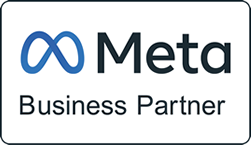In the business game, attention – specifically, the right attention – is king. By now, most of us know that social media is a major marketing avenue for businesses – an incredibly valuable way to attract customers and partnerships, and to amplify the brand as a whole. But, oh boy, are there a lot of questions.
What social media platform is best for your business? Facebook, Instagram, Twitter, Tik Tok, LinkedIn, YouTube? Go all-out on all of them? Or perhaps focus on one or two? Do you go the paid or organic approach?
Let’s talk…
Suzanne Mitchell, Senior Director of Marketing, GoDaddy Australia
As Australian businesses continue to evolve in the ‘new normal’, social media can be a great resource to help them engage customers, generate new leads and build a more personal, approachable digital presence.
There are 18 million social media users in Australia, however, there is no one-size-fits-all approach for selecting the right channels – that depends on your business, industry and customer demographics and preferences.
If you’re selling online and want to communicate directly with consumers, Instagram, Pinterest and Facebook can be great options to promote your products and steer customers to your website or online store. Or if you’re in professional services and keen to engage professional contacts and stakeholders, LinkedIn can be an effective networking platform.
To help ensure reach – at scale – consider both an organic and paid approach, and also experiment with different formats beyond just static posts, like Instagram Stories or LinkedIn Texts Ads.
With all marketing channels, ensure your branding, including messaging and tone, is consistent and true to build trust and recognition amongst your audience.
Alex Roslaniec, Co-Founder, Hey Bud Skincare
In our industry (D2C, skincare), social media platforms including Facebook and Instagram are crucial to our business success.
Instagram serves as a front-facing channel for new customers to understand our brand values, educate, and also showcase the benefits of our products. To existing customers, Instagram allows us to build up a connection and understand our customers more.
Facebook is the perfect platform to build a strong community. We’ve built a Facebook group called the “Hey Bud VIP’s” where our customers are sharing their enthusiasm and passion for our products and the brand. There’s always someone sharing their latest tips, excitement for upcoming products, or our favourite when people post their positive results from using our products.
I’d encourage others to do research into similar brands in your industry and see what social media channels they’re using and why, which will allow you to analyse what channels might be best for your business.
Edrianne Javier, Head of Marketing & Public Relations, 12RND Fitness & UBX Training
As a Fitness Franchise, our ultimate goal guiding all of our efforts across social media is to generate high quality leads for both Franchise Sales and Membership Sales. In order to identify which platform can help us to increase our volume of leads, ensures that those leads are high quality (easy to convert), and uses budget the most effectively – we test. We select a number of different platforms we believe our target audience is most likely to be using, and run a mix of paid and organic campaigns, then analyse the results.
According to Hootesuite’s latest Digital Executive Summary Report (2021), 45% of all internet users globally use social media platforms to research their purchases. We encourage our Franchisees to share as much insight into their club environment as possible through their content across all placements within both platforms. Then over time, they can focus their efforts based on where they’re getting the most engagement and membership interest. For some, it’s more Facebook, and the use of Messenger, and others see greater results through stories and Direct Message via Instagram.
David Fairfull, CEO & Co-Founder, Metigy
The golden rule of business is to never start something before you can answer why you’re starting it. So, when assessing the best social media platform for your business, the key to success is having a clear understanding of what your company’s objectives are.
Is your social media objective to drive sales or leads, build brand awareness, or act as a customer service platform?
The answer to these questions will affect which is the “best” platform to select.
Breaking this down:
- Facebook and Instagram are ideal for businesses looking to drive direct sales through targeted paid ad campaigns, but their cluttered nature does make it tough for brands to grow communities organically
- Instagram is best suited to brands that can drive engagement and build their brands through visual content
- LinkedIn can be leveraged by white-collar businesses for thought leadership and innovation
- TikTok and Snapchat are best suited for businesses looking to target a younger audience with original video content
Rather than having a strong presence on every social platform on the market, identify the channels that best suit your objective and align your social strategy accordingly.
Growing your business’ social media presence isn’t as easy as flicking a switch on. It requires consistent performance analysis and optimisation in order to grow, which is where digital marketing tools become a critical business asset.
Run Samarakoon & Robert Mikhail, Directors, Cosmetic Avenue
Social media is such an integral part of Cosmetic Avenue’s platform to educate and communicate with our clients. In fact it’s so important that we have a dedicated in-ouse Social Media Manager.
Being such a visual platform, which our clients are high users of, we utilise the various features across the platforms, particularly Instagram and Facebook to post educational surgical videos, Q&A videos, Before & After transformations, and to answer many of the questions we receive via DMs (Direct Messaging).
Facebook’s ‘Groups’ feature has allowed us to create a dedicate private Cosmetic Avenue Discussion Group, which now has over 4,000 members! The group encourages discussion, questions, and sharing of before and after images, in a safe and supportive environment created to support its members during a nervous but exciting time.
With over 25,000 followers already, Social Media will continue to be an integral method of client engagement for our business.
Anna Ji, Head of Product, Clipchamp
For businesses looking to integrate video into their digital marketing strategies, social media is an obvious choice. Not only does it have the ability to target niche audience segments, but it can also lead to more business down the track. In fact, according to research, social videos generate 135 per cent more organic traffic than static imagery.
When deciding on the best platforms for your strategy, it’s important to understand which platforms your audiences are accessing the most and really hone in on them.
For example, a beauty company might want to make use of social media platforms like Instagram, over Twitter or Facebook. While a finance company may opt for LinkedIn. Also, don’t forget that 98 per cent of Australian users access social media via mobile devices, so make sure your content is mobile friendly and following the correct specifications.
Handy tip: Ensure the content is tailor-made for each platform, as it will have a much higher chance of engagement and turning buzz to business than a one-size-fits-all marketing approach.
Alexander Frolov, CEO, HypeAuditor
Brands are increasingly flooding to social media, all fighting for the attention of users. There are a few factors to consider when choosing which social media platform will yield the most ROI and leads for your business.
Brand personality: Brands need to have a clear vision of their brand identity. When posting content, you need to keep in mind what emotions you want to trigger in your audience and it needs to reflect your brand personality. For example, for audacious, young, and bold brands with a young target audience, TikTok might be the most suitable platform.
Audience: Even though it seems very obvious, it’s often overlooked. It’s paramount to understand what audiences use each platform. For example, according to the HypeAuditor recent research, the core TikTok audience in Australia is female between 13 and 24 years old (44.65%).There is also a large number of users between 13 and 17 years old (31.56%). So if you’re a B2B company, TikTok might not be the best option for you.
Campaign goal: Some platforms will be more appropriate than others depending on the objectives of your campaigns. If you’re looking to launch an influencer marketing campaign, and want the highest engagement rate, as it is a popular KPI for brand awareness, Instagram or TikTok are your best options. But if you want to further your reach and achieve long-term impact, you might want to consider YouTube.
Competitors analysis: Study competitors’ websites, social media profiles, and ads to get a sense of the creative assets that they’re using and look at their audience responses too. Since influencer marketing is a relatively new marketing channel, the information gathered about your competitors’ strategies is especially valuable, as it helps to adjust your strategies and choose the mechanics that work best on different platforms.
Dirk Steller, Founder and Managing Partner, Seed Space Venture Capital
The media landscape has shifted dramatically over the last five years, propelling social into focus as a vital engagement tool for business.
My focus goes to LinkedIn, the world’s largest professional network with more than 740 million members spanning at least 200 countries. It offers an instant global audience and a large opportunity to create a substantial network with like-minded industry professionals.
For a start-up seeking investment, the platform offers engagement opportunities with the high-level decision makers, while allowing it to showcase its brand and differentiate it from the competition.
Social media and, particularly LinkedIn, now forms upwards of 50 per cent of public outreach in the fintech sector. In fact, according to social media management Hootsuite, a staggering 55 million companies worldwide are now on LinkedIn.
Robin Marchant, Head of Marketing APAC, Shopify
Whether your brand is exploring social media marketing for the first time, or whether you’ve been doing it for years, it’s never been more important to invest in understanding the customer and how the way they search for information and interact with your brand has changed in the last six months.
It’s easy to take a ‘spray and pray’ approach to social media by posting content on every channel and hoping for the best, but this is the fastest way to wasting resources and putting customer relationships at jeopardy. Customers expect brands to use their customer data to everyone’s advantage, which means using the data to only reach out to customers on platforms they want to hear from you on and with information that is genuinely helpful.
It’s important to keep an eye out for new or fast-growing platforms, like TikTok, as well, to ensure you’re not falling behind on customer expectations and behavioural trends.
Start with the data, and let customer insights dictate how social media strategies are implemented.
Ben Crow, Marketing & Partnerships Executive, WLTH
With so many diverse social media platforms existing in the current market, it can often be hard for businesses to pick and choose where to best focus their attention.
My tip would be to refer to your business model and the demographic you want to target to help steer you in the right direction. Every business is different, so it’s important to completely understand your customers and the platforms they are using before rolling out any social strategy. Think about your messaging and know exactly what you want to achieve before you start mindlessly uploading content.
Social media is also a great way to gather feedback from clients and build it into your overall NPS strategy for your business. As with everything, if you aren’t allocating time to your socials, you need to decide if it is worth establishing a social account. If you don’t put the work into it, you won’t get the results you want.










